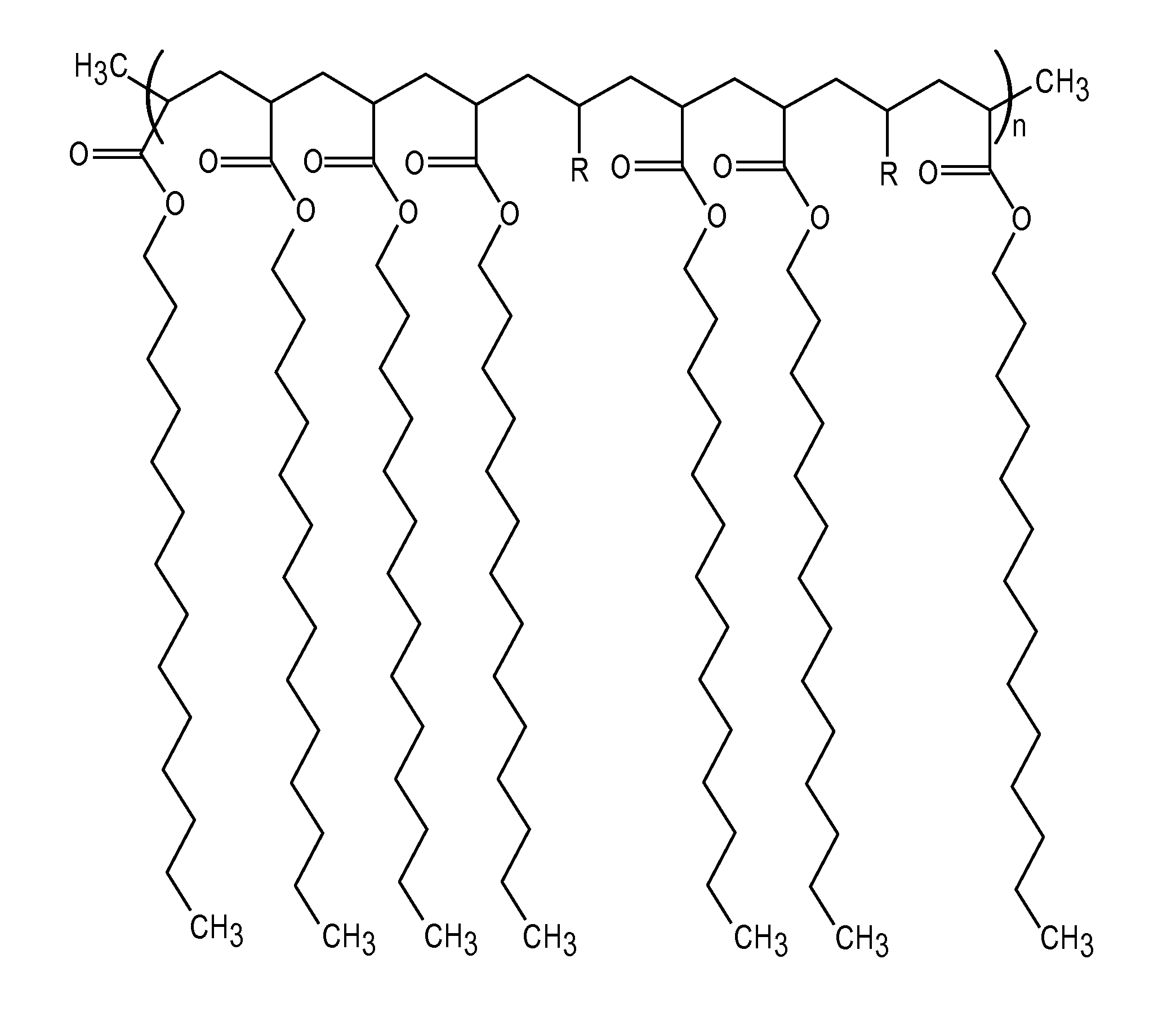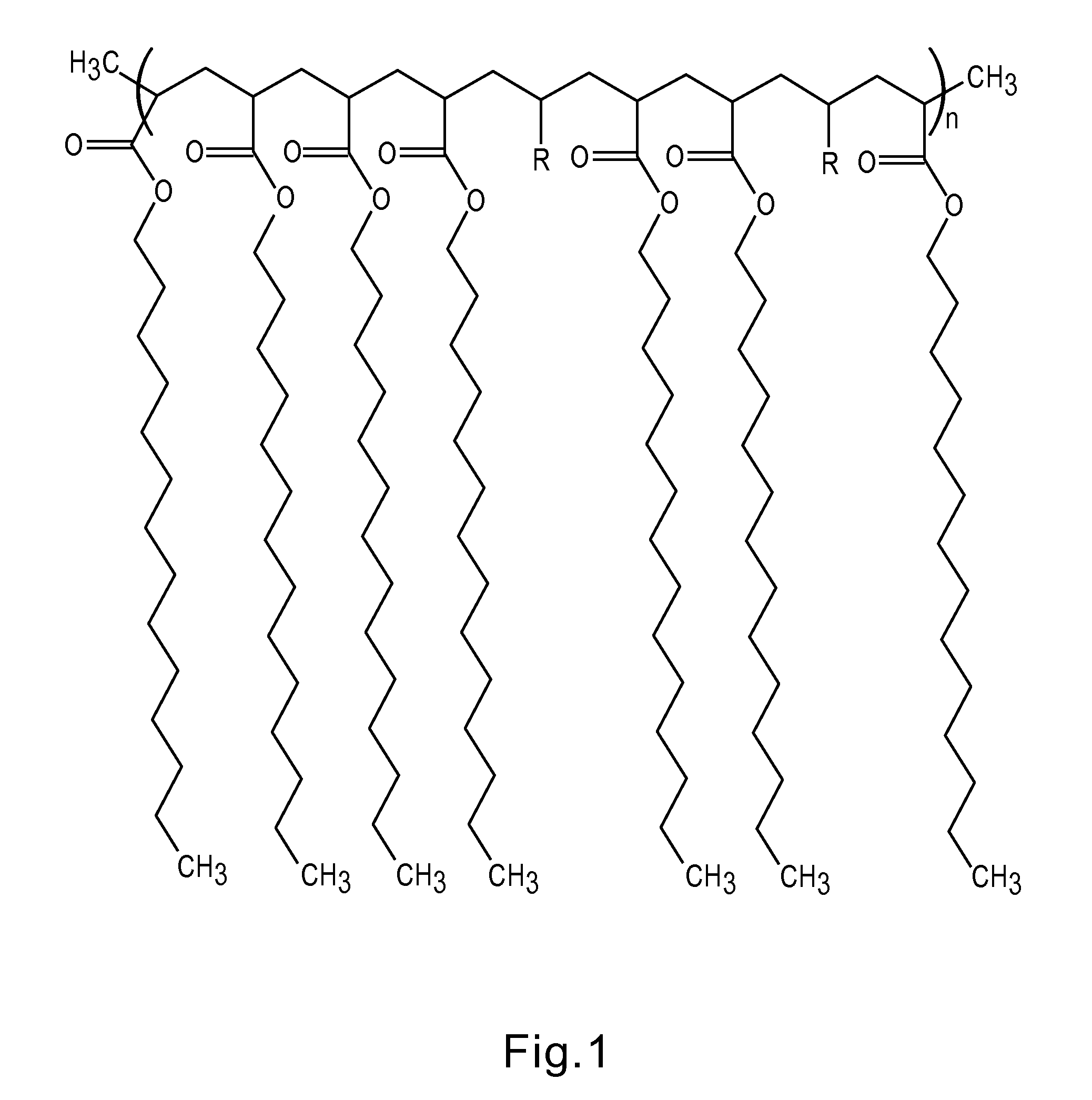Articles containing functional polymeric phase change materials and methods of manufacturing the same
a phase change material and functional polymer technology, applied in the field of functionally reactive phase change materials, can solve the problems of poor fabric flexibility and properties, excessive moisture absorption, and inability to post-treatment synthetic fibers or fabrics,
- Summary
- Abstract
- Description
- Claims
- Application Information
AI Technical Summary
Benefits of technology
Problems solved by technology
Method used
Image
Examples
example 1
Preparation of Polyglycidyl Methacrylate
[0182]In a flask equipped with stirrer, condenser, nitrogen purge and temperature controller was reacted:
[0183]
Ingredientswt.1.)n-pentyl propionate (Dow Chemical, Midland MI)37.62.)Glycidyl methacrylate (Dow Chemical, Midland MI)85.53.)Di-t-amyl peroxide (Sigma-Aldrich Corp. Milwaukee WI)5.44.)Di-t-amyl peroxide (Sigma-Aldrich Corp. Milwaukee WI)0.2
[0184]#1 was added to the flask and heated to 152° C. under nitrogen. #2 and #3 were combined and added slowly to reaction flask over 5.5 hours. This was let react and additional 0.5 hours, then #4 added, let react for 1.0 hour then cooled to yield a 69.4% solution of polyglycidyl methacrylate. This solution was dried for 4 hrs@120° C. in a forced air oven to yield 100% dried polyglycidyl methacrylate.
example 2
Preparation of Polymeric PCM
[0185]In a flask equipped with stirrer, condenser, nitrogen purge and temperature controller was reacted:
[0186]
functionalIngredientswt.eqiv.1.)95% Palmitic Acid36.150.1412.)Dried polyGMA from Ex. 1 above20.060.141
[0187]#1 was added to the flask and heated to 130° C. under nitrogen. #2 was added slowly to reaction flask over 0.5 hours. This was let react and additional 3.0 hours, then cooled to yield a polymeric PCM with melt point of 38.5° C. and 63.1 J / g latent heat.
example 3
Preparation of Polymeric PCM
[0188]In a flask equipped with stirrer, condenser, nitrogen purge and temperature controller was reacted:
[0189]
functionalIngredientswt.eqiv.1.)95% Myristic Acid34.670.1522.)Dried polyGMA from Ex. 1 above21.600.152
[0190]#1 was added to the flask and heated to 130° C. under nitrogen. #2 was added slowly to reaction flask over 0.5 hours. This was let react and additional 3.0 hours, then cooled to yield a polymeric PCM with melt point of 16.1° C. and 29.8 J / g latent heat.
PUM
| Property | Measurement | Unit |
|---|---|---|
| enthalpy | aaaaa | aaaaa |
| temperature | aaaaa | aaaaa |
| temperature | aaaaa | aaaaa |
Abstract
Description
Claims
Application Information
 Login to View More
Login to View More - R&D
- Intellectual Property
- Life Sciences
- Materials
- Tech Scout
- Unparalleled Data Quality
- Higher Quality Content
- 60% Fewer Hallucinations
Browse by: Latest US Patents, China's latest patents, Technical Efficacy Thesaurus, Application Domain, Technology Topic, Popular Technical Reports.
© 2025 PatSnap. All rights reserved.Legal|Privacy policy|Modern Slavery Act Transparency Statement|Sitemap|About US| Contact US: help@patsnap.com



